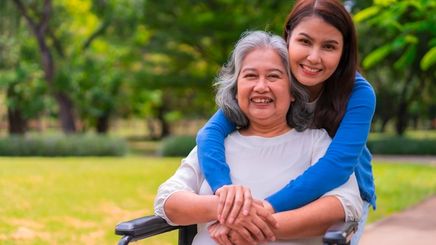
Are public spaces in the Philippines female-friendly? It doesn’t take a genius to realize that our sidewalks, footpaths, bridges, and streets are difficult to use, and many of them certainly do not . What role do these spaces play in female safety and ? How can we make them better? Four women in architecture share their thoughts on the matter.
Generosity Makes a Space Friendly
“As an architect and a woman in a , I would say that women are meticulous in the perspective of design and how we articulate concepts into form creates endless possibilities that turn into something uniquely beautiful,” says Ar. Alysa Yvette Par, Principal & Design Architect at PAR Architecture.
“So far, a city within a city – such as BGC and Rockwell – exhibits female urban planning,” she says. She defines female-friendly spaces as “generous” and believes the Philippines has a long way to go in terms of safe built environments. This means generous, walkable sidewalk spaces equipped with lots of lighting. “These preserve the space bubble with respect to women and make it comfortable and safe for everyone.”
Further, she adds that a city must have generous spaces for public parks where people can create memorable experiences, and a systematic public transportation. Ideally, the latter should have ample space for hubs and connectivity that are strategically located and efficient.
Female-Friendly Is People-Friendly
For City and Transportation Planner Ar. Angelica Camacho, it’s a question of whether we even have functioning spaces to begin with.
“In general, our public spaces could be a lot more female-friendly. The first issue is safety (or at the very least, the perception of safety),” she says. “The second issue is the basic functionality of our spaces. Are our streets walkable? Are they shaded? Are there enough benches to rest on? Do we even have enough (free) parks or public spaces to begin with?”
For Ar. Camacho, it all starts with people-friendly urban design. “Good lighting, places for rest, shaded areas with landscaping, comfortable walking paths, and legible wayfinding are all examples of female-friendly urban design that anyone can benefit from.” She adds, “Designing spaces for women and vulnerable sectors guarantees a friendly design for everyone.”
“Our lived experiences of the world are different. We know what it's like to run in high heels and sweat with make-up on, carry groceries while having to push a baby stroller, and feel unsafe – experiences that whether fair or not, affect how we move about the world,” she explains. “There are nuances and small details that women in architecture and design, can understand and appreciate.”
Redefining Safety and Respect
For Ar. Allie Principe, making public spaces better for everyone is about changing our views of safety and respect – and right now, we’re dealt the bare minimum. “Most of our public outdoor spaces are, unfortunately, barely human-friendly. A lot of work needs to be done on physical infrastructures and in terms of defining what constitutes as ‘safe’, ”Ar. Principe explains. “Wide, well-lit sidewalks and paths are badly needed, but those can only go so far without better education about respect and safety.”
What can women in architecture contribute? Ar. Principe doesn’t think it’s necessarily about . “But I do think a lot of female designers are good at sympathizing with a wide range of users and understand their needs quite well. This is an important skill in designing since the quality of the solutions you provide would also depend on how you’re able to identify what needs to be solved.”
Said needs include restrooms with adequate facilities for women, aside from wide and well-lit pedestrian walkways. “A lot of existing public facilities miss out on providing safe spaces for not only women, but also children and persons with disabilities. Simply put,female-friendly design is also child-friendly, disabled-friendly, and all-gender friendly. It’s design that puts people, their comforts, and their safety as the top priority above everything else,” she says.
Spaces Where Women Can Be Independent
For Ar. Jilli Gomez, Principal Architect of Ikoniq Design Studio, female-friendly urban design enables women and makes them more independent. “I think any urban space starts being female-friendly when each woman feels safe in it. A space with easy accessibility such as wider ramps, seating or frequent rest stops, and dedicated spaces for women. A space where she won't need assistance from the opposite gender to move around, and generally, where women would feel comfortable.”
Women in architecture and design, says Jilli, can be more thoughtful and empathetic to the less obvious needs of end users. “There will always be a warmth, comfort, and softness when it comes to our designs,” Ar. Gomez says. This is a necessity, especially with the lack of available clean and safe public spaces for everyone to enjoy.
“Commercial areas like malls are starting to become more female friendly though,” she says. “Compared to other developed countries, many mid- to high-end spaces here have very clean amenities with appropriate accessories needed by women. But in terms of accessibility and safety, there is a lot of room for improvement.”
Working or walking on unshaded sidewalks can do a number on your hair and skin. Protect them from damage by using protective products like Cream Silk Salon Expert Treatment Keratin Damage Repair and POND'S UV Hydrate Sunscreen. The former restores brittle hair back to health, while the latter protects the skin from while delivering intense hydration.
Top off your routine with closeup Red Hot Toothpaste, which has Antibacterial Zinc that removes 99.9% of bacteria and leaves your breath fresh for up to 12 hours with regular use.
Women in architecture have first-hand insight into what makes a space safe and “friendly.” And while they can make a difference, it would take the support of an entire community to make these ideals a reality. Perhaps it’s time to put a woman in charge of making the general public feel safe.